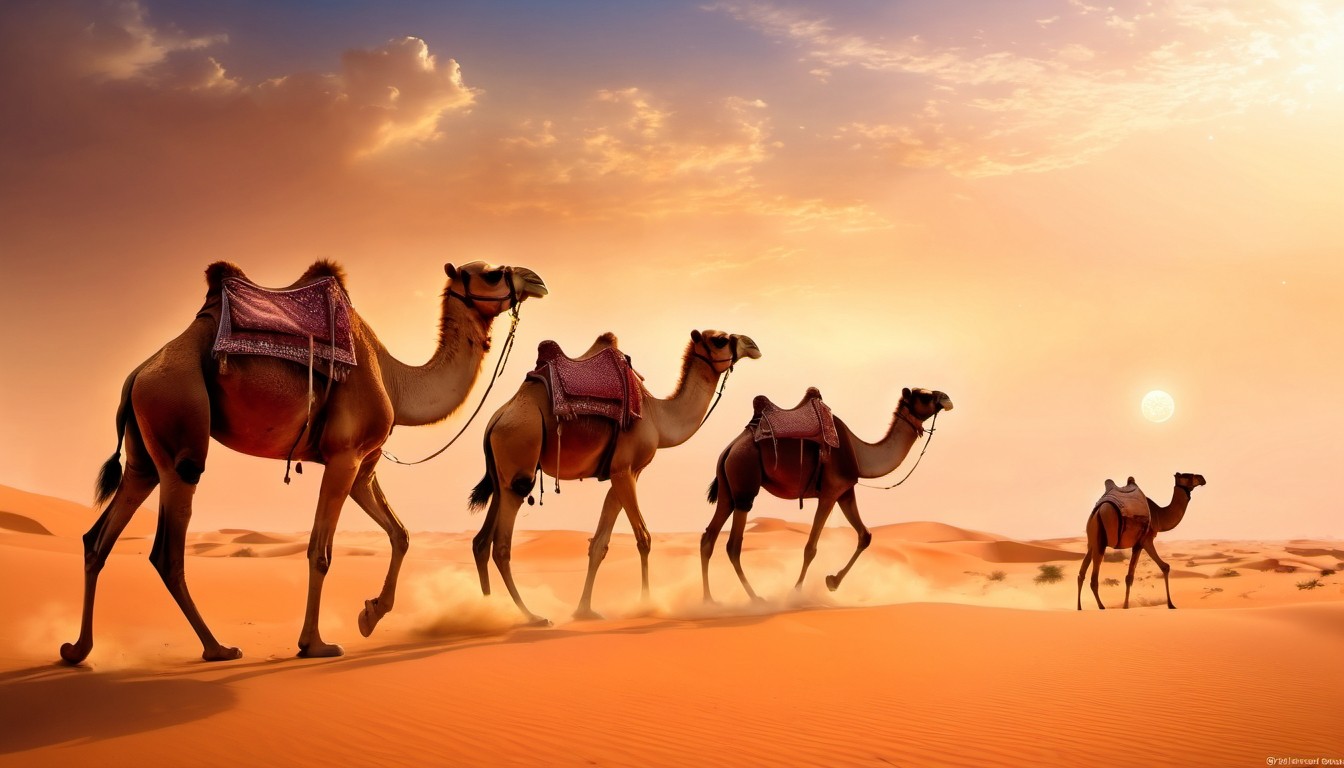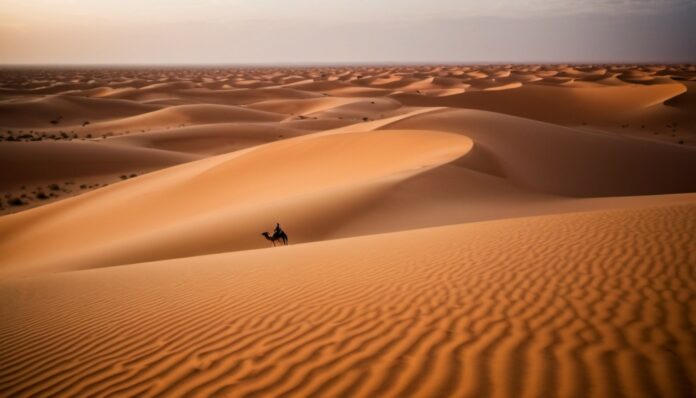The Sahara Desert is one of the most fascinating and vast regions on Earth. Covering a significant part of North Africa, it is the largest hot desert in the world and is known for its extreme conditions and unique landscapes.
Size and Location
The Sahara Desert spans approximately 9.2 million square kilometers (3.6 million square miles), making it almost as large as the United States. It stretches across 11 countries: Algeria, Chad, Egypt, Libya, Mali, Mauritania, Morocco, Niger, Western Sahara, Sudan, and Tunisia.
Climate and Temperature
The Sahara is known for its harsh climate. During the day, temperatures can soar up to 50°C (122°F), while at night, they can drop below freezing. The desert receives very little rainfall, averaging less than 25 mm (1 inch) per year in some areas.
Unique Landscapes
The Sahara Desert features a variety of landscapes, including vast sand dunes, rocky plateaus, gravel plains, and salt flats. The dunes, some of which can reach heights of over 180 meters (590 feet), create stunning and ever-changing vistas.
Flora and Fauna
Despite its extreme conditions, the Sahara is home to a range of plants and animals. Adapted to the arid environment, flora includes hardy shrubs, cacti, and acacias. Fauna includes species such as the fennec fox, addax antelope, Saharan silver ant, and various reptiles and insects.
Human Inhabitants
Various nomadic tribes, such as the Tuareg and Berbers, have lived in the Sahara for centuries. These communities have adapted to the desert’s challenging environment, using camels for transportation and relying on oases for water and agriculture.
Historical Significance
The Sahara has been a crucial part of human history. Ancient trade routes, like the Trans-Saharan trade route, connected sub-Saharan Africa with the Mediterranean, facilitating the exchange of goods such as gold, salt, and ivory. The desert also holds numerous archaeological sites, including rock art and remnants of ancient civilizations.
Interesting Facts About the Sahara Desert
- The Sahara Desert covers about 31% of Africa’s land area.
- The name “Sahara” comes from the Arabic word “ṣaḥrāʾ,” which means “desert.”
- The Sahara was once a lush, green region with lakes and rivers, as evidenced by ancient rock art.
- The desert’s sand dunes, known as ergs, cover only about 20% of its surface.
- The Tanezrouft Basin, one of the harshest parts of the Sahara, is known as the “Land of Terror.”
- The Sahara experiences occasional snowfall in its higher elevations.
- Oases, such as those in the Siwa and Kufra regions, are crucial for supporting life in the desert.
- The desert’s largest dune field, the Grand Erg Oriental, is located in Algeria.
- The Sahara’s climate has fluctuated between wet and dry periods over the millennia.
- The Nile River, which runs through the eastern Sahara, is the longest river in the world.
- The desert is rich in natural resources, including oil, natural gas, and minerals.
- The Sahara’s size and location influence weather patterns far beyond its borders.
- Ancient caravans traversed the Sahara using well-established trade routes.
- The desert’s sand can travel across the Atlantic Ocean, affecting weather in the Americas.
- The Sahara is home to some of the world’s oldest human remains and artifacts.
- Certain parts of the Sahara are used for military training exercises by various countries.
- The desert has inspired countless works of literature, film, and art.
- The Sahara is expanding southward at a rate of up to 30 miles per year.
- Camels, known as the “ships of the desert,” are essential for travel and trade in the Sahara.
- The ancient city of Timbuktu, located near the Sahara, was a major center of learning and trade.
- The desert’s landscape is constantly changing due to wind erosion and sand movement.
- The Sahara has some of the clearest night skies, making it ideal for stargazing.
- The Libyan Desert, a part of the Sahara, is known for its extreme aridity and heat.
- Some of the world’s most intense dust storms, known as haboobs, occur in the Sahara.
- The desert has a significant impact on global climate and weather patterns.
- The Sahara is believed to have once been home to a massive ancient lake called Lake Mega-Chad.
- The desert’s unique geology includes ancient volcanic mountains and plateaus.
- The discovery of dinosaur fossils in the Sahara provides insights into prehistoric life.
- The Sahara’s desertification process has been accelerated by human activities such as overgrazing.
- Efforts are underway to combat desertification through initiatives like the Great Green Wall project.
The Sahara Desert’s immense size, unique landscapes, and historical significance make it one of the most intriguing places on Earth. Despite its harsh conditions, it remains a region of beauty, mystery, and life.
